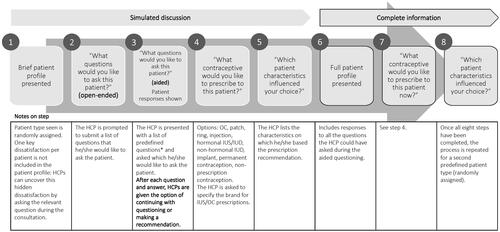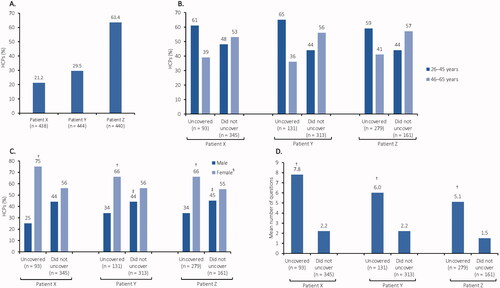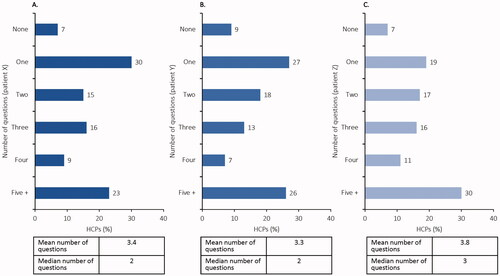Figures & data
Figure 1. Annotated schematic showing each step in the counselling simulation. The simulation was designed to elucidate the step-by-step decision-making process HCPs go through when making contraceptive recommendations to their patients. *Please see for the list of predefined questions. HCP: health care professional; IUD: intrauterine device; IUS: intrauterine system; OC: oral contraceptive.

Table 1. Patient characteristics and counselling questions.
Table 2. HCP demographics/characteristics.
Figure 2. Identification of women’s needs during contraceptive counselling. (A) Proportion of HCPs who identified their patient’s hidden need during contraceptive counselling. *Women’s needs were often not identified but were more likely to be identified when the patient actively requested a review of her contraceptive method. (B) Identification of patient hidden needs according to HCP age. (C) Identification of patient hidden needs according to HCP sex. (D) Mean number of questions asked by HCPs. HCPs who uncovered hidden needs were more likely to be younger (B), female (C) and ask more questions (D) than those who did not. *N values represent the number of HCPs who were assigned that patient’s profile. †Significantly higher than ‘Did not uncover’ at 95% CI. ‡Significantly higher than ‘Uncovered’ at 95% CI. §Females accounted for 46–100% of respondents per country; in 7/10 countries, more respondents were female than male. CI: confidence interval; HCP: health care professional.

Supplementary File 4. Table S2
Download PDF (63.3 KB)Supplementary File 3. Table S1
Download PDF (57.8 KB)Supplementary File 2. Figure S1
Download PDF (60.6 KB)Supplementary File 1. Online survey
Download PDF (191.5 KB)Data availability statement
The datasets used and/or analysed during the current study, where not included in this published article and its supplementary information files, are available from the corresponding author on reasonable request.


